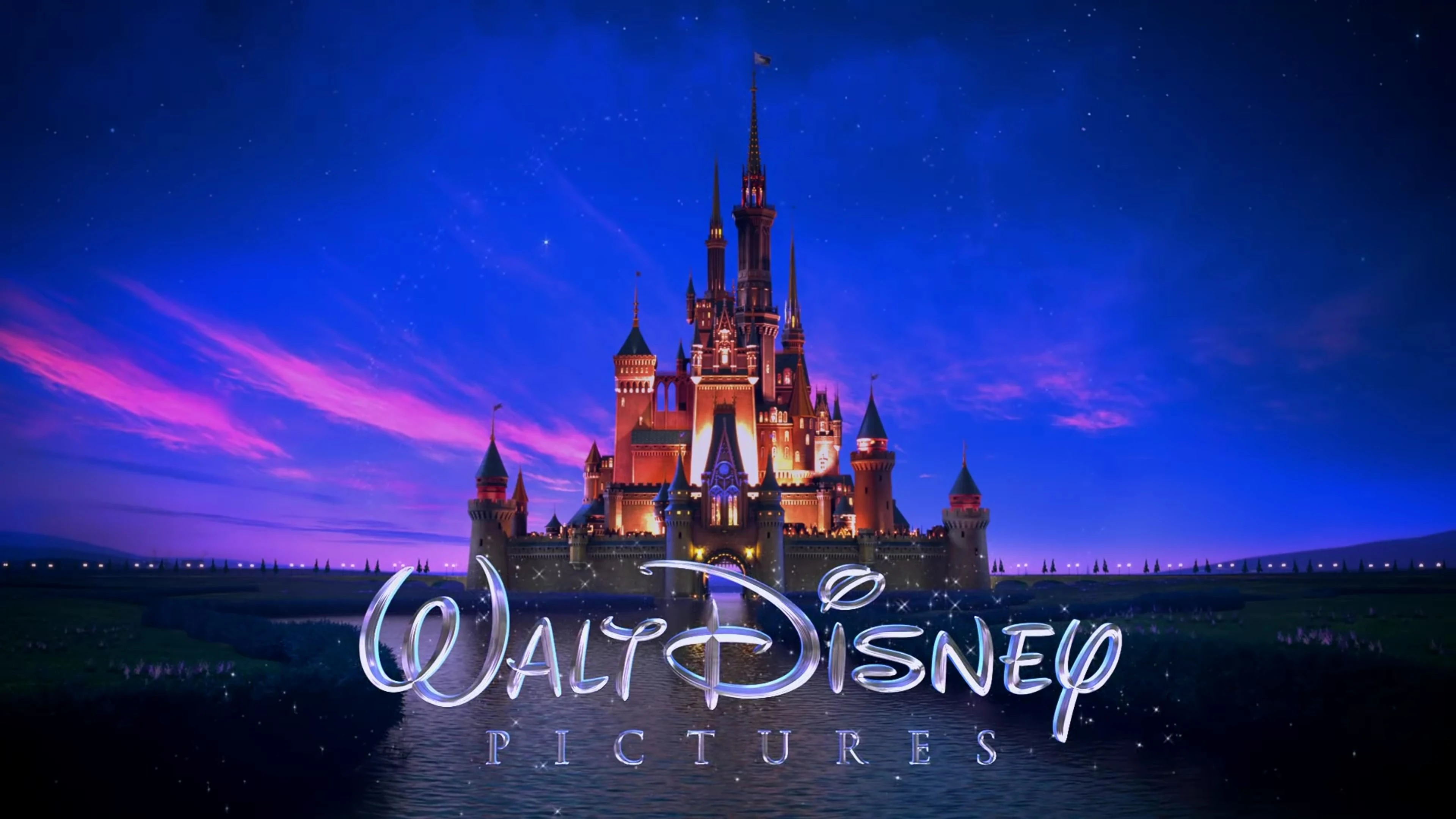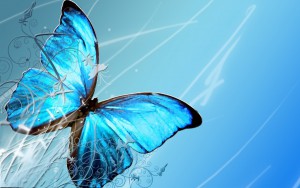Introduction
China, a country with the world’s largest population needs no further introduction. In the last decade there has been countless headlines on China. News around the world have been circulating opinions of its economy and domestic politics, even with a sense of fear with the rise of this communist nation. As the world’s second largest economy in gross domestic product measures, China has become an unknown factor for the world. Many unanswered questions arise around Chinese intentions. What does China want? Do they want to change the global order? What is China’s system of governance? Will they have an economic collapse? Do they want to be a hegemon? China is the colossal enigma of the 21st century. In order to understand modern day China one must look into its past and see what it is that shaped the modern Chinese ethos.
History
The Last Chinese Dynasty – The Qing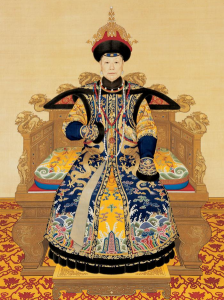
By the end of the 19th century China was devastated by a precarious feudal dynasty clenching onto its last breath. China’s last dynasty, the Qing had lost both Opium wars to the British, thus starting the era of “unequal treaties” and what the Chinese call “the century of humiliation.” Beginning with the British, China had to cede the territory of Hong Kong, open an additional ten ports for trade, legalize opium, and allow Christian missionaries to spread their faith. (“The Opening to China,” 2017) One after another foreign powers coerced China into signing even more treaties. (“The Opening to China,” 2017) In March of 1898, a small village in Shandong province had an open dispute with the Catholic authorities on turning a temple into a church. The villagers claimed that they needed the temple for religious rituals and that it was traditionally a place to practice martial arts. (“Boxer Rebellion,” 2008) This matter was brought to the attention of the local government in which they ruled in favor of the Catholic authorities. This enraged the villagers and under the command of the Boxers they attacked the church. This was the very beginning of what was later known as the Boxer Rebellion. (“Boxer Rebellion,” 2008) Thousands of Boxers were attacking foreign missionaries in the capital. It became so chaotic that the Boxers were murdering and torturing any missionaries, foreigners and Chinese Christians that they came across. The Empress Dowager Cixi decided to support the Boxers to oust the foreigners from China by sending imperial troops to aide them. In the final stages of the rebellion; there was an attempt to storm the compounds of the foreign legations. These buildings housed many seeking refuge against the violence of the Boxers. This ultimately led to the Eight-Nation Alliance of Russia, Britain, France, the United States, Japan, Germany, Italy and Austro-Hungary declaring war on China. The result was another defeat for the Qing dynasty. All the allied nations except America and Japan engaged in looting, plunder, arson and rape. And China was forced to pay $333 million in reparations. (“Boxer Rebellion,” 2008)
Below are tv show renditions of what a Qing Dynasty Empress would wear
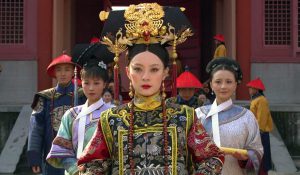

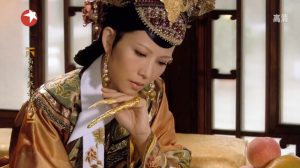
The Revolution of 1911- Establishment of the First Repubic
(Movie images of Republic revolution of 1911 – The fight and establishment of the first Chinese Republic)

In the early 1900s, millions of Chinese overseas either advocated for the establishment of a constitutional monarchy or outright revolution. A group called the Revolutionary Alliance under Sun Yat-sen began to gain momentum. (“The Chinese Revolution,” 2017) The alliance attempted at seven revolts against the Qing dynasty to no avail. However in September of 1911, revolutionaries in Southern China led another revolt against the dynasty and to their surprise the soldiers of the new modern Qing army switched their allegiance to Sun Yat-sen; staging a mutiny and joining the revolutionary alliance. This uprising was known as the “Wuchang uprising,” named after the city of which the uprising took place in. (“The Chinese Revolution,” 2017) After the successful uprising, the revolutionaries proceeded to telegraph other provinces in China to convince them to declare independence. And 15 provinces in southern and central China followed through and the representatives from the seceded provinces declared the founding of the Republic Of China. Subsequently in 1912 the feudal system that governed China for thousands of years came to an end. The 1911 revolution put the dynasty on its knees and ultimately the last dynasty of China fell; and the Republic of China was born. (“The Chinese Revolution,” 2017)
Although the new republic was established, it failed to unify the country. Instead due to the absence of the Qing government in territories that weren’t controlled by the new republic; it resulted in the rise of many warlords that disregarded the new Nationalist government. As a result, reforms from the new government never came to fruition. (“The Chinese Revolution,” 2017) After the death of Sun Yat-sen in 1925, Commander Chiang Kai Shek took his place to become the new leader of the Chinese Nationalist Party. Chiang was in favor of a military authoritarian government rather than Sun’s democratic socialism. (“Chiang Kai-shek:1887-1975,” 2017) Chiang also did not maintain good relations with the Communists as Sun had previously done. In 1927, in collaboration with the notorious green gang; Chiang Kai Shek launched a purge on labor workers on strike, most of whom were Communists. (Newman, 2013) Thousands of them were being rounded up to be shot or beheaded by the green gang. This incident was known as the “Shanghai Massacre,” marking the very beginnings of the Chinese civil war between the Nationalists and the Communists. (Newman, 2013)

World War II – The Invasion of Japan
The Chinese civil war was then interrupted by World War II, with the occupation of Manchuria by Japan in 1931. This led the Nationalists and Communists to form a temporary alliance to fight Imperial Japan. An estimated 20 million Chinese lost their lives and millions more became refugees. (“World Wide Deaths in WWII,” 2017) The war officially ended in China with Japan’s surrender in 1945. Chiang Kai Shek’s Republic of China was included as one of the five permanent members of the United Nations security council because of China’s role as an allied power in the war. With the surrender of Japan, the Chinese civil war almost immediately resumed. It is widely believed that the Japanese invasion significantly weakened the Nationalist government and gave way to the victory of the Communists in the Chinese civil war. (“China’s War,” 2015) In 1949 the Communist People’s Republic of China was established and successfully unified all of Mainland China. (“Chiang Kai-shek:1887-1975,” 2017) Chiang Kai Shek and the Nationalist party retreated to Taiwan and continued to run the Republic of China. Furthermore Taiwan was formally recognized as the legitimate government of China by the United Nations until the death of Chiang Kai Shek in 1975. (“Chiang Kai-shek:1887-1975,” 2017)
Communist China
After the unification of China, the Communists under Mao Zedong attempted to rapidly modernize the country. However, the government was unsuccessful in its policies to rapidly increase agricultural and steel output. The government allocated large amounts of the labor force into massive irrigation projects. The results were disastrous; the policy was highly ineffective and resulted in large grain shortages. In addition to human error, unfavorable natural weather conditions also contributed to the great famine that killed millions of farmers. The local government overworked the farmers and carelessly tried to accomplish their objective hastily. Their belief was that the construction of the irrigation systems would rapidly increase agricultural outputs but instead the outcome was far from desirable. (Dongping, 2008)
After the Great Leap Forward the Communist decided to undertake another disastrous project, the Cultural Revolution of 1966. It was a ubiquitous scale social project that attempted to get rid of anything that was considered from China’s past, be it culture, knowledge, tradition or religion. It was believed by Mao that only then can China industrialize and compete with western countries. It is estimated that almost the entire demographic of intellectuals were eliminated during this tumultuous time. It was seen as a crusade against intellects and those that practiced tradition. Religion was banned and anyone associated with religion was also eliminated. Hundreds of thousands if not millions were murdered, tortured, publicly humiliated, jailed or driven to suicide. And this ludicrous revolution only ended after Mao’s death in 1976. (Planker, 2011)
China’s Reform Period Under Deng Xiaoping
Deng Xiaoping subsequently became the new leader of the People’s Republic of China. He decided to experiment on opening China to the world through investment. He pushed for the creation of four special economic zones; creating tax incentives for foreign companies to invest in China and starting what the West calls the 20 year economic miracle. (Holmes, 2017) Under Deng’s economic reforms China was able to grow double digits yearly and this set the foundation for China to become the world’s second largest economy. (Chack, 1995)
Chinese Economy Today

Today, China’s economy faces many troubles. Economists around the world have agreed that China is moving into a perilous phase called the “middle income trap.” It describes when an economy has had increasingly stable growth due to heavy manufacturing and low cost of labor. It is the transition of an export led growth paradigm to a consumption and services model. This is the epitome to all developing countries wanting to join the ranks of the developed world. And this decade is crucial for China to transition into a developed nation or spiral into perpetually being trapped in the third world. However according to Rapoza, China may be going through a storm but it isn’t an indication for collapse. He believes that the service industry in China remains vigorous and has been increasing over the last 5 years. (Rapoza, 2016) He stated that household consumption is now 73 percent of the GDP growth compared to last year’s 60 percent. While the manufacturing industry has been decreasing as part of the GDP growth percentage. (Rapoza, 2016)

Modern Chinese Politics
The Chinese economy is also inevitably linked with modern day politics. President Xi Jinping is the current President of China and took office in 2012. One of the first speeches he gave was to commence the anti-corruption campaign. He openly admitted that corruption is the number one reason that will take down the communist party and cause China to collapse. Thus positioning his speech with his policy of catching corrupted officials who are “tigers” and “flies.” Since then he has purged thousands of officials mainly for the crime of corruption or party member misconduct.
Many Chinese analysts believe that President Xi Jinping has been involved in a factional struggle with former President Jiang Zemin. Former President Jiang ran China from 1989-2002.(Ong, 2017) Under Jiang, his cronies became extremely wealthy and they were rewarded immensely with high government positions. Part of the reason for his crony capitalism methods was to align himself with allies that helped him persecute practitioners of Falun Gong, a spiritual discipline derived from Chinese religions. Jiang felt threatened because of the growing numbers of practitioners they garnered in the late 90s. (Ong, 2017) After Jiang’s tenure, he continued to control the government through his cronies from 2003-2012. It was in 2012 that analysts believed that the Jiang faction, two Jiang lieutenants, former Chongqing secretary, Bo Xilai and security czar, Zhou Yongkang plotted a coup against Xi. It is clear to many that President Xi has alluded to their plot in several public speeches. Since the failed coup, Xi has been purging countless members and associates of the Jiang faction. (Ong, 2017) Ong believes that the Jiang faction still wields enormous influence in propaganda and domestic security government organizations. And as a result Ong also noted that it contributes to the perception that Xi is incompetent and incoherent in his reform policies. However in reality the Jiang faction whether in the financial sector or in government is attempting to disrupt and sabotage the reform plans. China analysts are also looking very closely at the developments of the 19th party congress. A meeting of the highest level officials in China to determine those that will be serving in the next term. Due to the informal mandatory retirement age of 68, most of the top leadership will be expected to retire this coming fall. Chinese experts believe that President Xi is trying to consolidate his power before the coming party congress so that he will have enough influence to replace officials in the Jiang faction. (Ong, 2017) It remains to be seen who will eventually win this factional struggle and what it means for the modernization of China in the 21st century.
Bibliography
-
- Boxer Rebellion. (2008). New World Encyclopedia, . Retrieved July 24, 2017 from http://www.newworldencyclopedia.org/p/index.php?title=Boxer_Rebellion&oldid=803755.
-
- The Opening to China Part II: the Second Opium War, the United States, and the Treaty of Tianjin, 1857–1859. (n.d.). Retrieved July 24, 2017, from https://history.state.gov/milestones/1830-1860/china-2
-
- The Chinese Revolution of 1911. (n.d.). Retrieved July 24, 2017, from https://history.state.gov/milestones/1899-1913/chinese-rev
-
- Newman, J. (2013). Shanghai Massacre (1927). In A. Mikaberidze (Ed.), Atrocities, Massacres, and War Crimes: An Encyclopedia (Vol. 2, pp. 595-596). Santa Barbara, CA: ABC-CLIO. Retrieved from http://go.galegroup.com.citytech.ezproxy.cuny.edu:2048/ps/i.do?p=GVRL&sw=w&u=cuny_nytc&v=2.1&it=r&id=GALE%7CCX3160600315&sid=exlibris&asid=883d38bb592c17af958a07d0bde8ca34
-
- History – Chiang Kai-shek. (n.d.). Retrieved July 24, 2017, from http://www.bbc.co.uk/history/historic_figures/chiang_kaishek.shtml
- Interview: China’s war against Japan significant to WWII victory: Cambridge professor. (2015, September 3). Xinhua News Agency. Retrieved from http://go.galegroup.com.citytech.ezproxy.cuny.edu:2048/ps/i.do?p=ITOF&sw=w&u=cuny_nytc&v=2.1&it=r&id=GALE%7CA427620841&asid=66933819a2af212a8ddba55f7783cf4e
- Worldwide Deaths in World War II. (n.d.). Retrieved July 24, 2017, from https://www.nationalww2museum.org/students-teachers/student-resources/research-starters/research-starters-worldwide-deaths-world-war
-
- DONGPING, H. (2009). Farmers, Mao, and Discontent in China. Monthly Review: An Independent Socialist Magazine, 61(7), 20.
-
- Planker, T. (2011). Psychic Impact and Outcome of the Chinese Cultural Revolution (1966–1976). International Journal of Applied Psychoanalytic Studies. Retrieved July 24, 2017.
-
- Chack-Kie, W. (1995). Measuring Third World Poverty by the International Poverty Line: The Case of Reform China. Social Policy & Administration, 29(3), 189-203.
-
- Holmes, F. (2017). China’s New Special Economic Zone Evokes Memories Of Shenzhen. Forbes . Retrieved July 24, 2017, from https://www.forbes.com/sites/greatspeculations/2017/04/21/chinas-new-special-economic-zone-evokes-memories-of-shenzhen/#3769ec1076f2
-
- Rapoza, K. (2016). China Economic Transition Under Way; Hard Landing Spared Again. Forbes. Retrieved July 24, 2017, from https://www.forbes.com/sites/kenrapoza/2016/07/20/china-economic-transition-under-way-hard-landing-spared-again/#ebd3a0f31d6c
-
- Ong, L. (2017). Chinese Regime Purge of Former Top Shanghai Property Developer Signals Decline of Political Clan. Epoch Times. Retrieved July 24, 2017, from http://www.theepochtimes.com/n3/2266855-purge-of-former-top-shanghai-property-developer-signals-decline-of-political-clan/
-
- Ong, L. (2017). Chinese Regime Why Xi Jinping Removed a Potential Candidate for the Party Leadership. Epoch Times. Retrieved July 24, 2017, from http://www.theepochtimes.com/n3/2272086-why-xi-jinping-removed-a-potential-candidate-for-the-party-leadership/
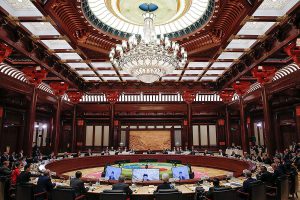
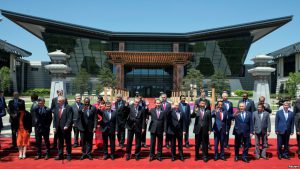
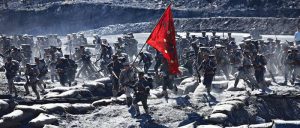
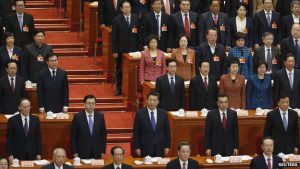
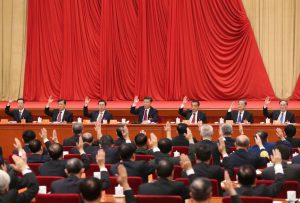
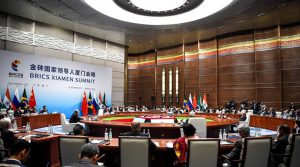
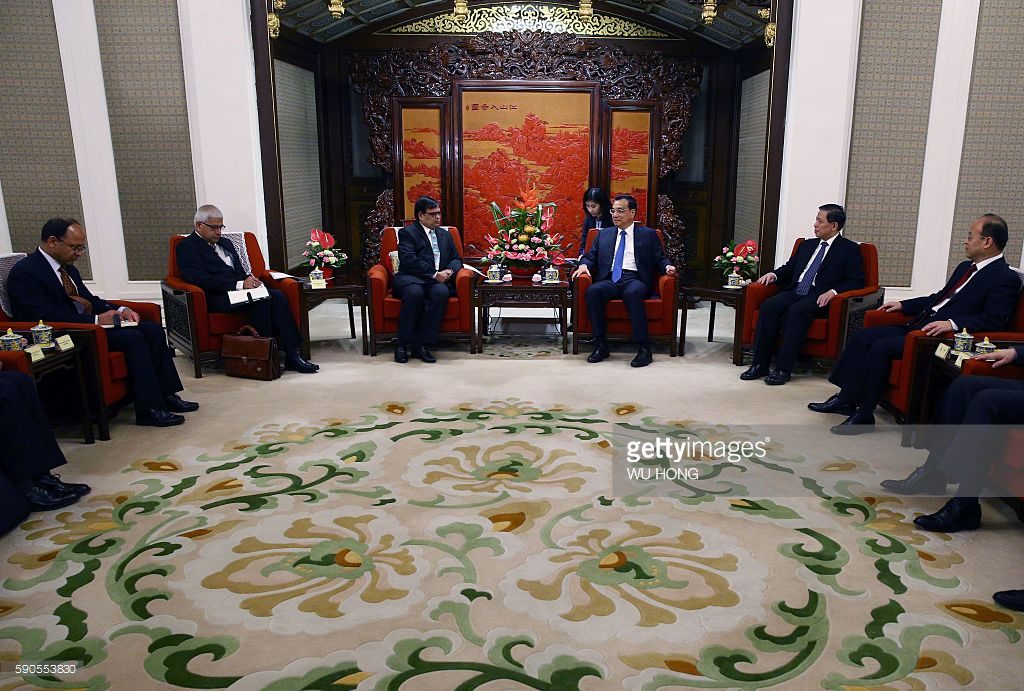
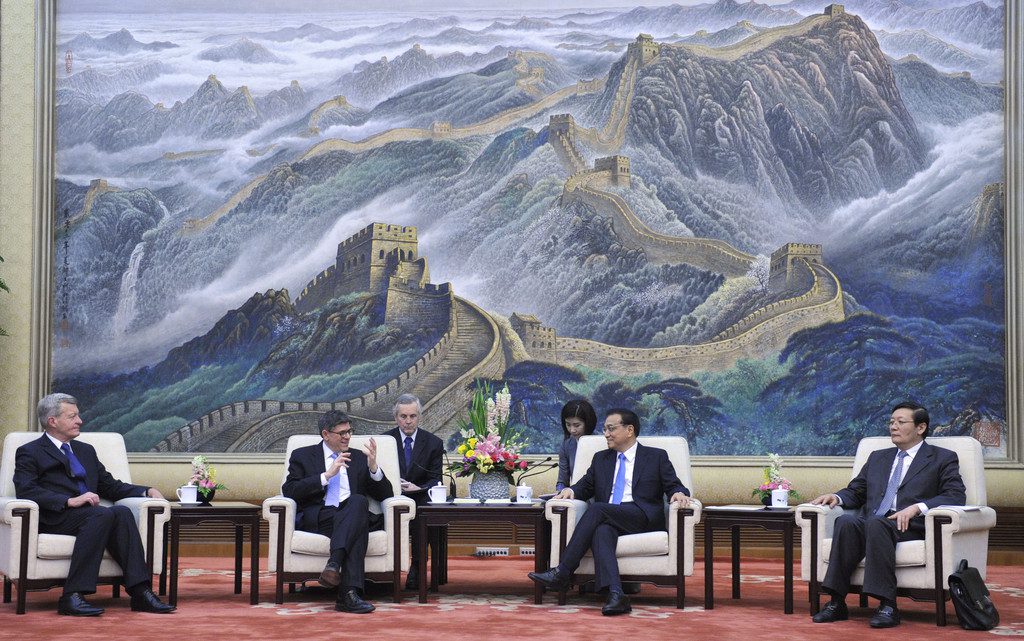

 There has been a consistent pattern concerning news coverage and censorship in China throughout the years. Media is generally regulated on a national level and important conversations are usually permitted to be discussed. However, when political instability arises, the leadership immediately attempt to chokehold all media platforms into silence. The New York Times reported on the “clamp down” on the Chinese Internet portals. (Forsythe, 2016) Much of China’s independent journalists use the Chinese equivalent of twitter, Sina Weibo, and microblogging app, Wechat, to spread sensitive information. However, the article mentioned that the Cyberspace Administration of China ordered the websites to either shutdown or filter the content that was being circulated. (Forsythe, 2016) The article speculated that the clamp down was due to an important party meeting that will be held in 2017. The article also stated that the party often puts in more rigid media restrictions than usual before an important event, often highly political ones. (Forsythe, 2016) It is still unclear whether these strict regulations will kill off the vibrant independent reporting that Weibo has inadvertently created. Chinese journalists up until this point had been playing a “cat and mouse game” with government censors; they would publish content without authorization and wait to see if the government censor would take it down. The article also quoted a Chinese reporter that said, even with the large amount of government censors, it was difficult to control news in a space invigorated by hundreds of millions of readers. (Forsythe, 2016) On top of that, these readers are metaphorically equated to a “flood” that’s hungry for news, alternative to government propaganda. The Cyberspace Administration issued a statement that said they were going after eight Internet companies that chased after economic gains and their “ideological thinking wasn’t high enough.” (Forsythe, 2016)
There has been a consistent pattern concerning news coverage and censorship in China throughout the years. Media is generally regulated on a national level and important conversations are usually permitted to be discussed. However, when political instability arises, the leadership immediately attempt to chokehold all media platforms into silence. The New York Times reported on the “clamp down” on the Chinese Internet portals. (Forsythe, 2016) Much of China’s independent journalists use the Chinese equivalent of twitter, Sina Weibo, and microblogging app, Wechat, to spread sensitive information. However, the article mentioned that the Cyberspace Administration of China ordered the websites to either shutdown or filter the content that was being circulated. (Forsythe, 2016) The article speculated that the clamp down was due to an important party meeting that will be held in 2017. The article also stated that the party often puts in more rigid media restrictions than usual before an important event, often highly political ones. (Forsythe, 2016) It is still unclear whether these strict regulations will kill off the vibrant independent reporting that Weibo has inadvertently created. Chinese journalists up until this point had been playing a “cat and mouse game” with government censors; they would publish content without authorization and wait to see if the government censor would take it down. The article also quoted a Chinese reporter that said, even with the large amount of government censors, it was difficult to control news in a space invigorated by hundreds of millions of readers. (Forsythe, 2016) On top of that, these readers are metaphorically equated to a “flood” that’s hungry for news, alternative to government propaganda. The Cyberspace Administration issued a statement that said they were going after eight Internet companies that chased after economic gains and their “ideological thinking wasn’t high enough.” (Forsythe, 2016) China is a very perplexing country in western perspectives. It is a living contradiction. It is highly developed in the coastal cities and other parts of the country, while other provinces are still developing and very poor. China has had a history of liberalizing its media after the death of Mao but it is still highly regulated by the CCP. In addition, depending on the political climate censorship may lighten or strengthen dramatically and almost overnight. Economic liberalization has also followed this path. It use to be much easier for international corporations to conduct business in China; however in the last few years, the Chinese economy has become unstable. As a result, the government has pushed foreign companies into an undesirable position. At the same time they have taken stolen technology and given it to their own companies to outperform international corporations. Their political system is even more of a contradiction. They call themselves Communists and claim to use socialist ideology with “Chinese characteristics”. Yet the discrepancy lies in the fact that China is a capitalistic economy and not at the same time. The government highly regulates the economy and controls certain sectors that the government believes are vital to national well being. For example, the CCP directly controls the banks, energy sector, currency, and raw materials. However, the government also allows many sectors to liberalize and let the market allocate resources on its own. They also greatly believe in free trade and encourage it internationally. Thus creating a half state owned and half private sector economy.
China is a very perplexing country in western perspectives. It is a living contradiction. It is highly developed in the coastal cities and other parts of the country, while other provinces are still developing and very poor. China has had a history of liberalizing its media after the death of Mao but it is still highly regulated by the CCP. In addition, depending on the political climate censorship may lighten or strengthen dramatically and almost overnight. Economic liberalization has also followed this path. It use to be much easier for international corporations to conduct business in China; however in the last few years, the Chinese economy has become unstable. As a result, the government has pushed foreign companies into an undesirable position. At the same time they have taken stolen technology and given it to their own companies to outperform international corporations. Their political system is even more of a contradiction. They call themselves Communists and claim to use socialist ideology with “Chinese characteristics”. Yet the discrepancy lies in the fact that China is a capitalistic economy and not at the same time. The government highly regulates the economy and controls certain sectors that the government believes are vital to national well being. For example, the CCP directly controls the banks, energy sector, currency, and raw materials. However, the government also allows many sectors to liberalize and let the market allocate resources on its own. They also greatly believe in free trade and encourage it internationally. Thus creating a half state owned and half private sector economy.